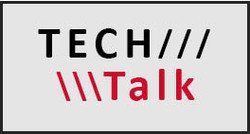 By Bennett Jordan, Ph.D., B.C.E.
By Bennett Jordan, Ph.D., B.C.E.
Termites are cryptic, eusocial organisms that consume wood day and night. That limited information is enough to convey the significant challenge termites present to PMPs. While subterranean termites deservedly receive most of the attention, drywood termites can be exceedingly difficult in their own right. Drywood colonies are considerably smaller, with mature colonies ranging from dozens to a few thousand individuals, and lead a secretive lifestyle. A single piece of sound, seasoned wood can sustain a drywood colony, functioning as a colony/nesting site and food source. The lack of water is not an issue; drywood termites are able to extract all they need via metabolic processes and from the wood they consume.
Drywood termite colonies excavate a complex network of galleries. The size and shape of drywood termite galleries vary, but they are often smooth and close to the surface of the wood. Drywood termites will consume wood up to the surface and leave just a thin layer of paint or veneer between the external environment and the colony. The gallery system is unpredictable with some areas that narrow to the width of one termite and others consisting of open cavities. Unlike subterraneans, drywoods will excavate galleries by eating spring and summer wood along and across grain.
If you have food, water, shelter and protection from predators and the elements in one place, why would you leave? Other than alates produced by mature colonies, they don’t. This makes drywood termite detection and inspection difficult at best.
TREATMENT OPTIONS. Drywood termite control strategies fit into three basic options: fumigation (whole structure or container), localized treatment or replacing/discarding infested material. Despite killing 100 percent of termites when performed properly, fumigation is not a realistic option for all scenarios. Infestations that are believed to be small may be approached with a spot treatment protocol, the most common method being to “drill and treat” — drill, or otherwise gain entry into the gallery system and inject dust, foam or some other formulation of termiticide/insecticide.
Ideally, product will reach the gallery system and eventually eliminate the colony. In reality, the complex and unpredictable excavation of the gallery system presents challenges. Drilling where termites are believed to be active may not actually contact the gallery system and any application that doesn’t provide results is just wasted product.
Another complicating factor is the possible presence of multiple colonies in the same area, potentially even in the same piece of wood. It might take years after wood is infested with drywood termites for there to be any outward indication that an infestation exists. Without destructive sampling, there isn’t a reliable way to determine if you’re dealing with a single or multiple colonies. Your overall treatment will be a failure if you treat the gallery system of one colony and there is another nearby colony with a separate gallery system.
How can localized drywood termite treatments be improved? It goes back to inspection. As a graduate student at the University of Florida, I evaluated the TermaTrac T3i as an alternative to traditional inspection methods. The most relevant feature of this device is a function that uses microwave radiation to detect movement, gathering real-time evidence of termite presence through wood and other materials. Although every situation is unique, I was able to create some baseline readings of termite movement (frequency and intensity) based on a known number of termites and set distances between the device and the activity.
In the field, I looked for termite movement at nine locations in northern Florida where there was evidence of a drywood termite infestation (swarm, visible damage or fecal pellets). I used a kick-out hole or damage as my initial measurement spot and then took termite movement readings every 10 cm to form a grid. Locations with termite movement were marked with electrical tape and numbered to allow for comparisons of termite movement before and after treatment at the same spot. I used the drill and treat method with Termidor Dry, a micro-cellulose “dust” formulation containing 0.5 percent fipronil, and returned to each site every three months for one year after treatment to re-measure the immediate area. (No treatments were made after the initial.)
Out of the 80 spots with initial termite activity, I detected movement at 26.7 percent of those spots six months after treatment, and at 6.3 percent of them one-year post-treatment. In total, there was a 91.3 percent reduction in detected termite activity and 6/9 sites showed no termite activity at all one-year after treatment.
Given how cryptic drywood termites are, a localized drywood treatment can only responsibly be referred to as “not yet a failure,” because a persistent absence of swarms, new damage or fecal pellets are only supporting evidence, but not definite indications, of a lack of termite activity. However, the TermaTrac T3i gave me another layer of information to judge the effectiveness of my treatments. Without access to movement data, each site would have been considered a tentative success, but with it I could target additional applications to pockets that still had activity.
It’s unrealistic to expect localized drywood termite treatments to ever be as effective as fumigation, but advancements in technology are helping to close that gap. With the right knowledge, tools and patience, drywood termites can be beaten.
The author is director of technical support and regulatory compliance, Copesan Services, Menomonee Falls, Wis.
This Tech Talk article was originally published in the November 2016 edition of PCT magazine.
